Handle With Care
It isn’t easy to be a hero or heroine to a director. If he’s any good at his job, he has to be the boss. Which may or may not be why Preston Sturges is not one of Betty Grable’s favorite directors. On the last day of Betty’s last picture with Preston, she was even determined to outsmart him and not say goodbye to him. With the help of her hairdresser, she snuck out, minus the farewell. But fate and Mr. Zanuck outsmarted Miss Grable. She was called back a week later for re-takes.
In a more recent picture, Betty met her Waterloo. She wanted a certain close-up. The director disagreed, finally said, “Okay, then we’ll have the camera on your face when you’re dancing.” Betty’s rosebud lips emitted a forceful word. The director tossed it right back at her. He says he’ll never make another picture with her. But I’m sure he will when Betty asks for him. They happen to make beautiful pictures together.
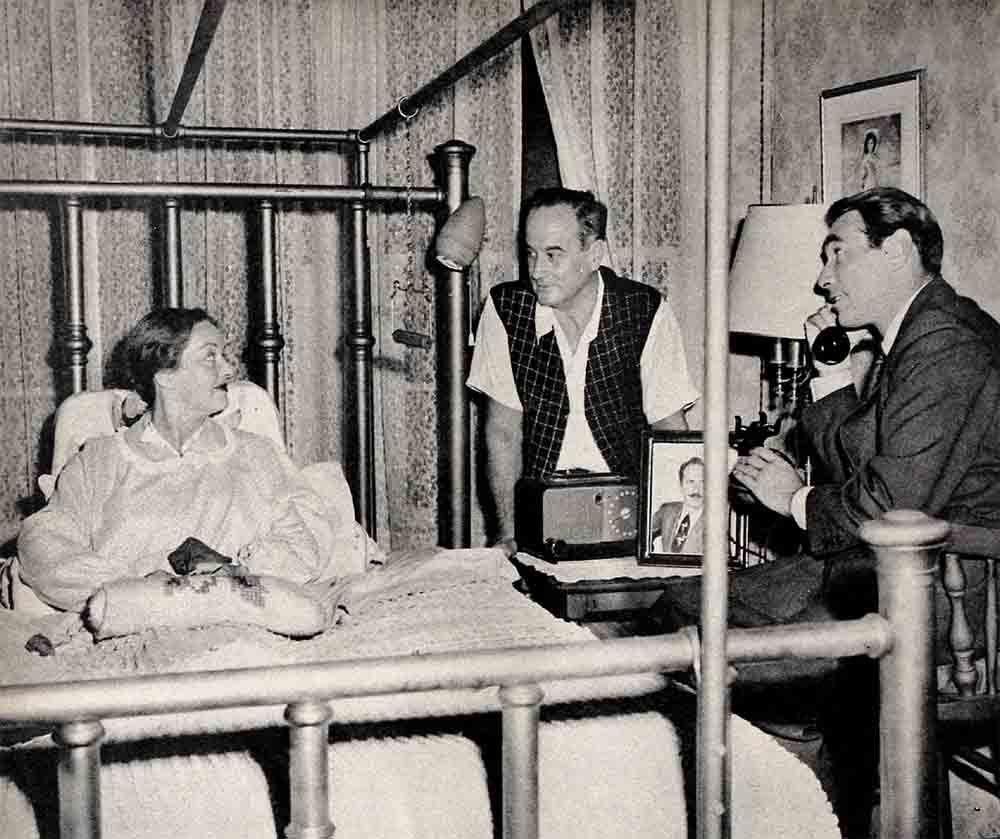
When Shelley Winters co-starred with Frank Sinatra in “Meet Danny Wilson,” people in the studio held their breath waiting for the battles of temperament. But Shelley and Frankie fooled everyone. While they weren’t crazy about each other, they didn’t fight. But, oh, how Shelley fought with the director, Joseph Pevney! She never will again, however. Mr. Pevney took control of her temperamental temperature, right off the bat. “Hold it!” ht. shouted after the first two takes. “Look,” he said to Shelley, “you’re trying to be cute. Stop it!” Shelley turned white, but she stopped it.
I caught another sample of Joe’s tactics when I mingled with the crowd at Ciro’s. Shelley, doing a scene with Sinatra, was supposed to be singing, and Frank, supposedly drunk, was to come into the night club and ruin her song. Shelley started telling Pevney how she wanted the scene played. The director turned to his writer and said quietly, “Write her out of the scene.” Later, when Shelley again started to direct the director, he said again, “Write her out of the scene.” Shelley, who would rather die than lose a scene, rushed to her dressing room, locked herself in for twenty minutes, then came out, sweet and subdued, with “Okay, I’ll do it your way.”
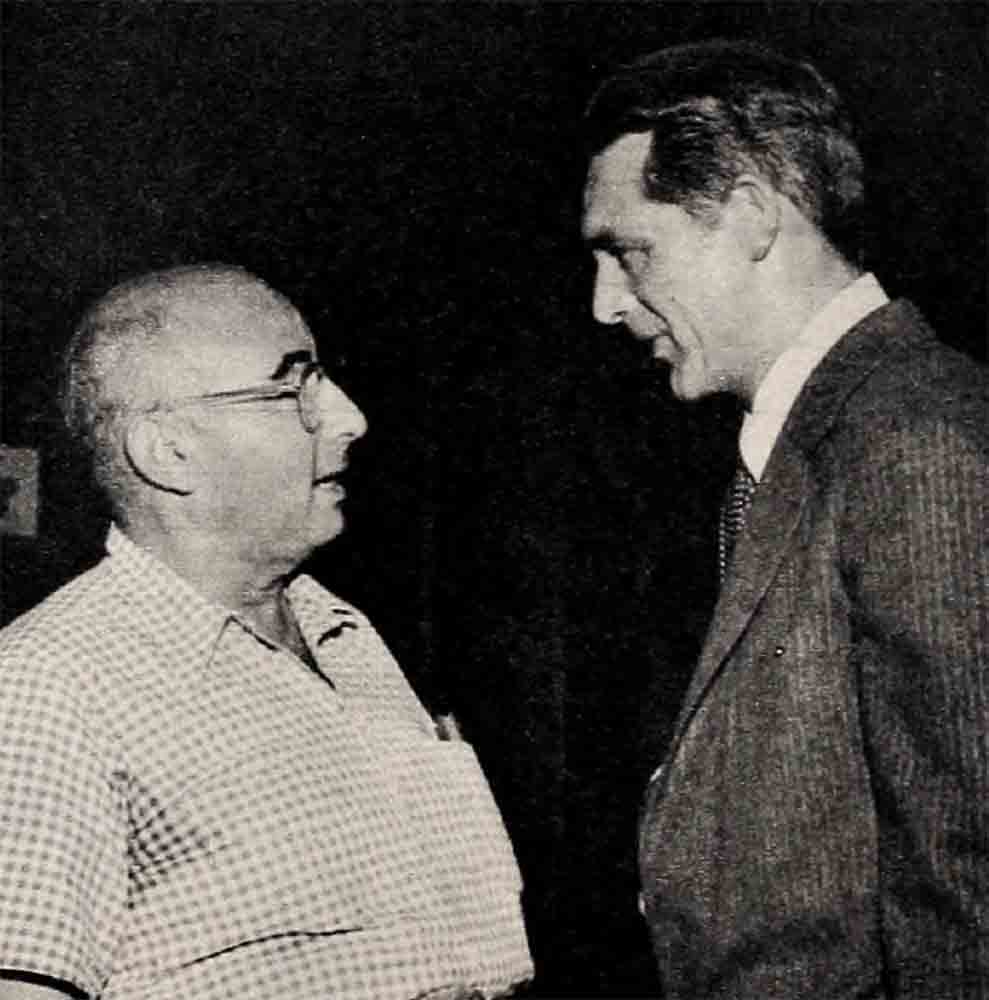
There are more ways of getting past a mountain than by climbing it. June Allyson is just as determined to have her own way as Shelley is, but she approaches her objective with—shall we say—more intelligence. June has never embarrassed her director by shouting at him on the set. June merely goes to her dressing room, crinkles up her cute little nose, and sits until she gets her way. P.S. She usually does.
Joan Crawford rarely loses her temper on the set. She’s too hep for that. But recently, when a top-name director persisted in picking on a small-part woman player, Joan, who just happened to have a glass of water in her hand, involuntarily poured it over the startled man’s head. Joan immediately apologized. The director laughed. But he stopped picking on the bit player.
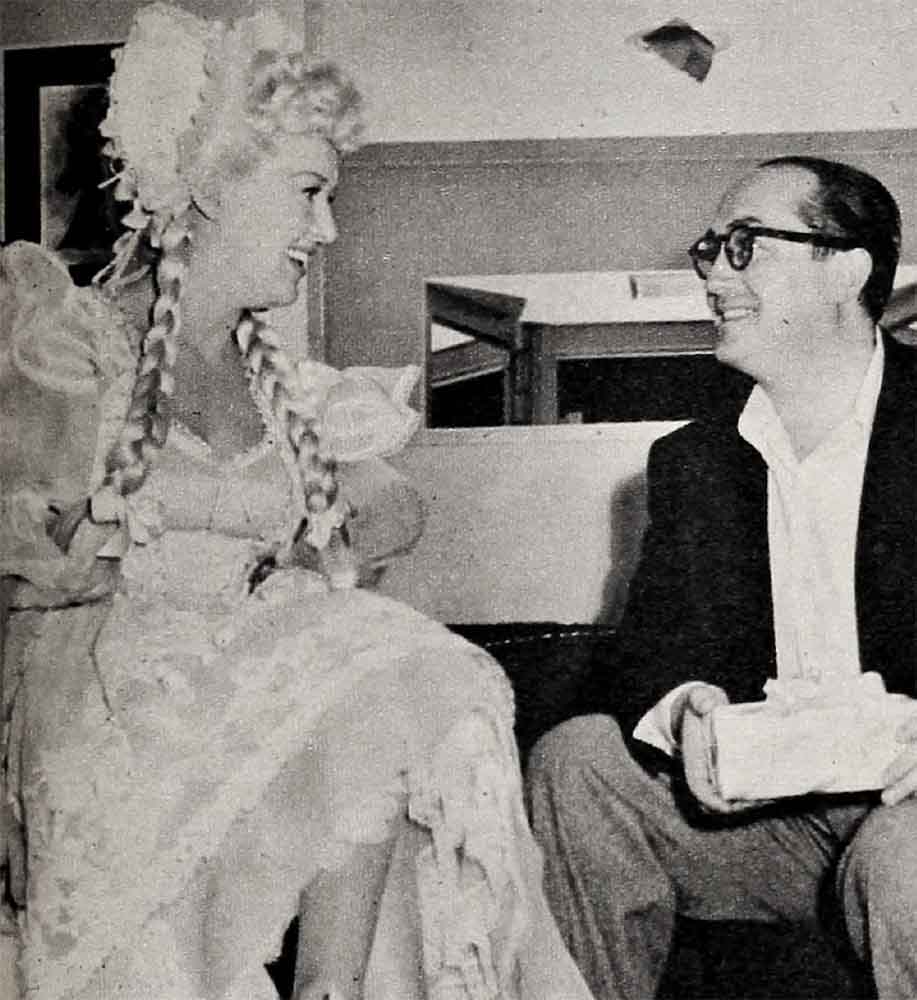
When Hedy Lamarr doesn’t see eye-to-eye with her director, she usually falls flat on her back. In one recent picture, Hedy actually had her couch right under the camera! But when she was asked what was wrong, she never quite knew. “It feels funny,” she’d say when she felt ill, when she didn’t like her dialogue.
Not too long ago preparations were made to go on location. The crew was set, tickets bought, everything lined up. The day before the company took off, Miss Lamarr calmly announced that, according to her contract, she didn’t have to go on location—ever! Sure enough, it was in the small print. The director had his revenge later. One Saturday when Hedy planned a weekend out of town, he ordered her to come to the studio at four-thirty in the afternoon to be made up and have her hair fixed, for a scene presumably. By the time Hedy was ready, it was too late to work. “But it ruined her weekend,” gloated the normally kind executive.
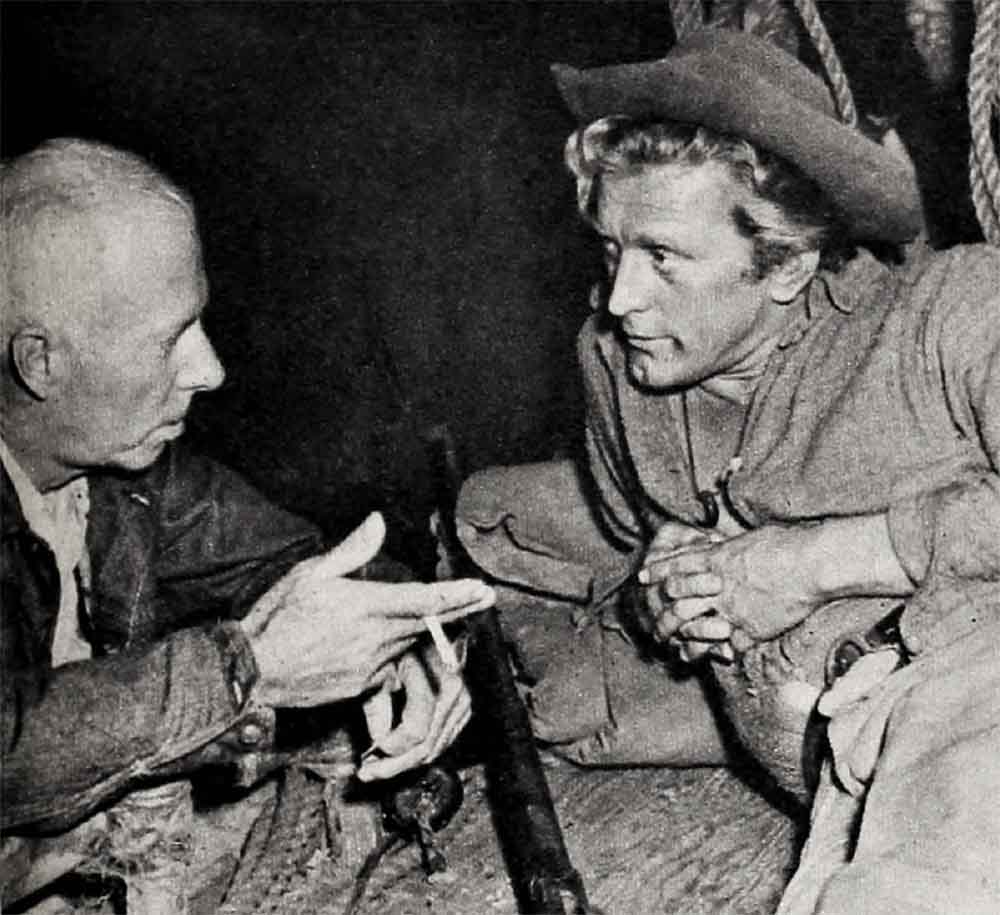
Stars are sometimes frustrated directors. Claudette Colbert is one. So is Kirk Douglas. Claudette always has a phobia about one side of her face. And lately when her director wanted a three-quarter shot of Claudette’s face, with the other player to the side of her, Claudette insisted on turning the other cheek, which meant backing the other player into the camera. The director was sarcastic. Claudette rushed from the set. “But,” the director told me later, “when the time came to shoot, she was there waiting, and she laughed and said, ‘All right, you so-and-so, do it your way.’ ” Actually it was a compromise, with something new added—respect.
Mr. Douglas is a very perspicacious performer. And if I ever directed him in a picture, which isn’t likely. I’d consult with him on the scenes because he knows what’s what. When directors don’t do this, Kirk, if he is sure he is right—ups and leaves the set. The one time he should have and didn’t, was when he was told to move aside because he was hiding Walter Brennan in a scene. I’m told Kirk refused to budge on artistic grounds.
Beautiful blonde Marilyn Monroe is short on stardom, long on confidence. She was forty minutes late reporting to the set one bright summer morning. The director gave her a wicked tongue-lashing before the assembled cast and crew. Marilyn has never offended again. Perhaps the lesson of punctuality is better learned at the beginning of your career.
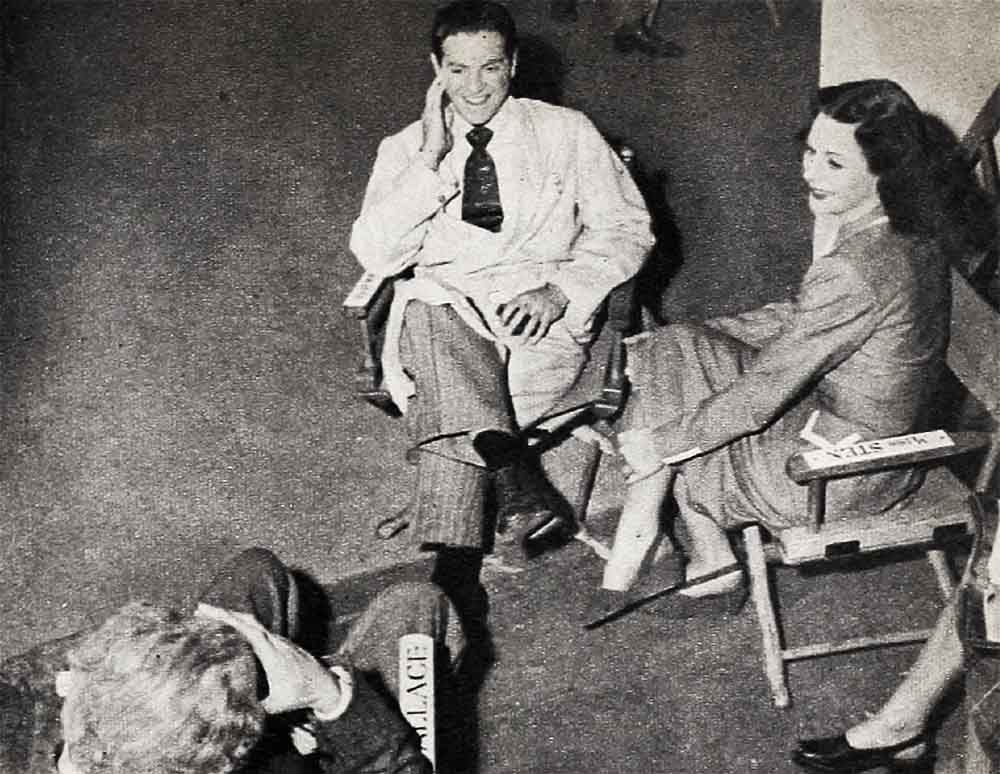
Bette Davis made some of her best pictures with Willie Wyler and Curtis Bernhardt. I wouldn’t want to buy her personal relationship with either man. Curt megaphoned her comeback picture, “Payment on Demand.” (This was before “All About Eve” when it was tough going, career-wise, for Bette.) Because of an argument over the ending of the picture, Bette hasn’t spoken to Curt since—even though the box-office proved Curt right.
Willie Wyler directed Bette in “Jezebel,” “The Letter” and “The Little Foxes.” After each picture—a better word would be “battle”—Bette swears she’ll never do another with Willie. And when Goldwyn wanted to harness star and director for “The Little Foxes,” Bette tried to beg off, telling Wyler that Tallulah Bankhead was the only person for the picture.
As you know, Bette did the film, but throughout the ong schedule, she and Wyler fought like—well you name it. Willie crowned everything, and was nearly crowned himself, by accusing Bette of imitating.Tallulah! (Later Bette did just that in “All About Eve.”) Came the day when Bette saw the finished picture. And she remarked, “Working with Wyler is hell. But when you see what comes out on the screen, it’s heaven.”
I have never known anyone more unpredictable on the set than Mark Stevens. One minute, happy, sweet and gentle. The next, pugnacious, suspicious and definitely not happy. It was an unhappy idea to team Mark with director Irving Reis who is sensitive to the point of complexity. “Dancing in the Dark” is the picture they made. And never were two adults more in the dark. One afternoon, Irving, on a trigger point of exasperation, pushed Mark. Then fists flew, with both emerging from the fracas with bloody noses.
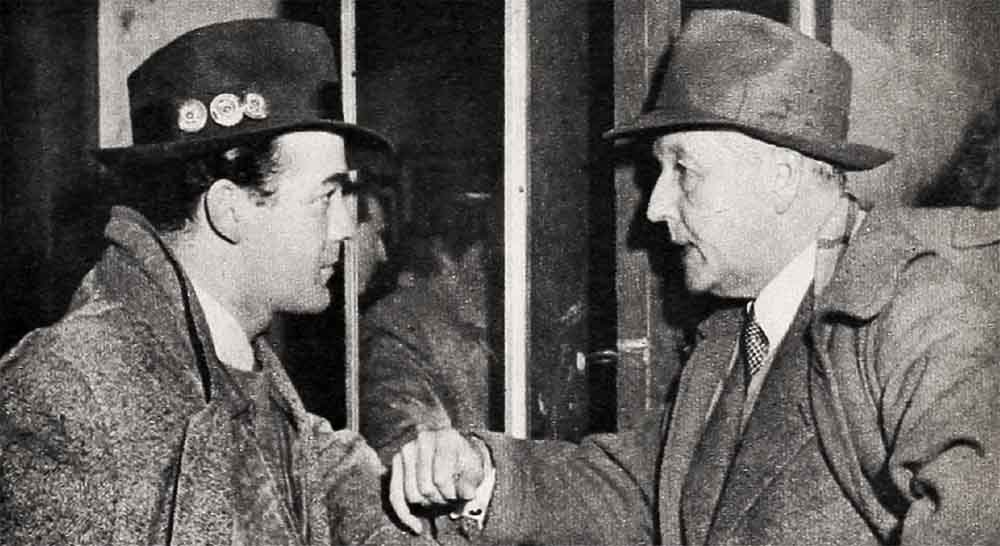
A psychologist told me that Mark’s feuds and fights are based on his own personal insecurity. Well, he can’t be worried too much about dollars and cents. He voluntarily relinquished a very handsome contract at Twentieth Century-Fox. It’s too bad that, since then, the fine A pictures for which he gave up his Fox job, haven’t materialized.
I always find Joan Fontaine pleasanter to chat with when her movie star isn’t shining too brightly. Some of her directors say the same. Edmund Goulding, who is charming, especially to his lady directees, had a swell method of handling Joan during their “Constant Nymph” picture. After each scene, he’d go to everyone on the set and whisper, “Tell her how beautiful she is. Tell her what a wonderful actress she is. She’s so insecure, you know.”
They cal! Barbara Stanwyck “Everyone’s Girl.” She’s certainly one of the best actresses the town has ever had. But if she has ever argued with the director during the making of a picture, I haven’t heard about it. Her attitude towards her career was summed up for me by ace-cameraman, George Folsey “She puts you on the spot,” said George. “Stars have to be ready to work at 9 a m. Most of them are ten minutes late and that’s all right. But I get to the set at twenty minutes of nine and Barbara is made up and eager to go.”
Barbara loves—and lives for—her work. She once told me, “When I’m in front of the camera, an invisible wall separates me from the world, and I know peace.”
Other delightful guys and dolls from the director’s eye-and-ear view: William Holden—very cooperative; Cary Grant, who, if he has something on his mind about script or direction, takes the director into his dressing room and says, “Look, I want to explain”; Robert Mitchum, a great worker, who is very gallant to the actresses, never backs them into the camera; Betty Hutton, so wound up in her work, so high strung, but so intelligent about what she is doing.
In the constant seesaw for position between stars and directors some stars get their egos soundly smacked. Sometimes it is the director who loses and resigns. Sometimes everything is just peachy from start to finish. But, except for a few rare heavenly specimens, this mostly happens when the lead in the picture is a boy or girl who hasn’t yet reached the top—or has reached it and is falling down.
THE END
It is a quote. PHOTOPLAY MAGAZINE JANUARY 1952




